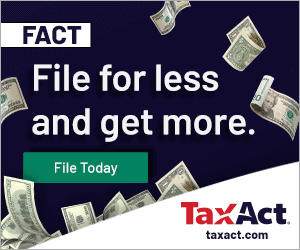5 Self-Employed IRS Tax Forms for 2023


File your taxes with confidence.
Your max tax refund is guaranteed.
Updated for tax year 2023.
If you’re even a moderately successful freelancer, you likely know must file a tax return and pay taxes on your income. But which tax forms do you need to file your self-employment taxes?
At a glance:
- In addition to the usual Form 1040, if you are self-employed, you will likely need to attach certain schedules, like Schedule C or Schedule SE.
- Use any 1099-NEC forms you receive to accurately report your self-employment income.
- Form 8829 can help you figure the home office deduction, if applicable.
Here are five Internal Revenue Service (IRS) self-employed tax forms and information that might be relevant to your tax situation.
1. Form 1040, U.S. Individual Tax Return
Most U.S. tax filers use Form 1040 even when they’re not self-employed. This form is comprised of different sections where you can report your income and claim tax deductions. Whether or not you owe taxes, you might qualify for certain tax credits.
Certain types of income or deductions may require you to attach additional schedules. For instance, if you choose to itemize your deductions instead of taking the standard deduction, you’ll need to include Schedule A with your Form 1040.
As a freelancer in particular, you might need to attach other specific schedules to your Form 1040.
2. Schedule C to Form 1040, Profit or Loss From Business (Sole Proprietorship)
Speaking of schedules, one you’ll probably need to become familiar with as a self-employed taxpayer is Schedule C. If you are a sole proprietor, this is an essential form for you. Since sole proprietors take all business profits as personal income, you use Schedule C to report all income and expenses from your business to determine your profit or loss.
Schedule C consists of two sections:
- Income: Starting with income, record all payments you received from your clients. You might have different amounts of gross receipts or sales, gross profit, and gross income.
- Expenses: Schedule C organizes your expense amounts into numerous line items. For example, auto, advertising, depreciation, and supply expenses are all recorded in separate categories.
Although you don’t have to fill out a separate IRS tax form for business use of your car, it makes sense to understand what you can claim for Schedule C. You can only deduct all expenses for operating your car if you use it exclusively for your business. If you drive for both business and personal use, you must keep careful records of how many miles you drive for each. You can use the standard mileage rate or the actual expenses method to calculate your business mileage deduction.
3. Form 1099-NEC, Nonemployee Compensation
After the end of the year, each of your clients should give you a Form 1099-NEC, Nonemployee Compensation, for the total they paid you that year if it exceeded the baseline amount that the IRS specifies ($600 in 2023).
Compare every Form 1099-NEC you receive to your records to make sure the amounts are consistent. Your clients file Form 1099-NEC with the IRS, so you don’t want there to be a notable discrepancy if the client claims they paid you more than they did.
4. Form 8829, Expenses for Business Use of Your Home
You might be able to claim certain expenses for business use of your home by taking the home office tax deduction. In order to do so, your home office must meet the following criteria:
- It must be your principal place of business or a place of business where you meet with patients, clients, or customers.
- This area of your home must be used exclusively for business purposes.
If you determine part of your home is regularly used as your principal place of business, you can calculate the actual expenses of your home office using Form 8829. Deductible expenses might include mortgage interest, insurance, utilities, and repairs. You won’t be able to deduct the full cost of these expenses, but you can deduct the percentage of your home that is dedicated to your home office. For instance, if you use 15% of your home exclusively for business, you will be able to deduct 15% of your home expenses as part of this business deduction.
However, if crunching those exact percentages sounds like a hassle, a quicker way to calculate your expenses is to use the simplified method, where you simply deduct a flat rate per square foot. The qualification requirements are the same, but the process of figuring out the deduction and your recordkeeping obligations may be more straightforward.
Fortunately, TaxAct® makes it easy by doing those calculations for you — all you have to do is answer a few interview questions.
5. Schedule SE (Form 1040), Self-Employment Tax
In most cases, self-employed people who earned at least $400 in net self-employment income (in 2023) have to pay self-employment tax (SE tax). You can do this by filing Schedule SE with your Form 1040. The SE tax is 15.3% of your net income, and it covers your Social Security and Medicare taxes. Thankfully, you can claim 50% of self-employment taxes owed as a tax deduction. Schedule SE will help you figure out this deduction and direct you to enter it on your Form 1040.
The bottom line
Always check that you’ve got the correct versions of all IRS tax forms for the year and follow all directions carefully. The forms might change, so you don’t want to use a piece of outdated information.
Using a tax software program, like TaxAct, helps ensure you’re using the correct documents for the current tax year. Simply answer a few questions about your specific tax situation and our program generates the appropriate tax forms for you.






